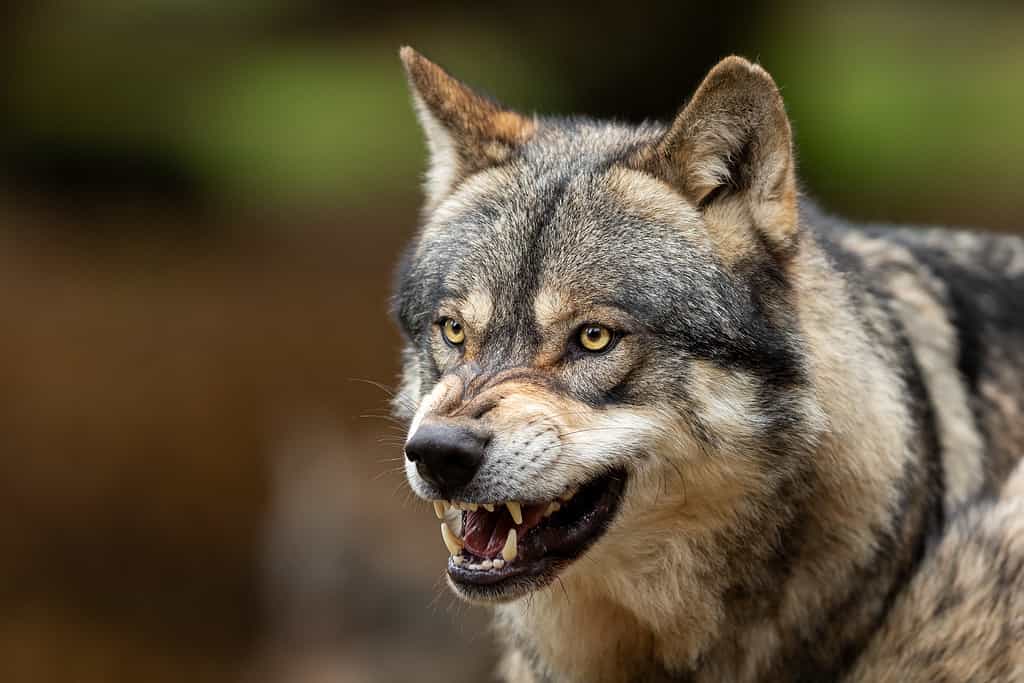Wolves are fascinating apex predators that live and hunt in packs. Although once widespread across the United States, the majority of the country’s wolves now live in Alaska as they were extirpated from many other states. Today, wolves only inhabit thirteen states in the United States, with Minnesota being home to one of the larger populations. So, keep reading to learn about the wolves in Minnesota, including where they live, what they eat, and what threat they pose to humans.
How Many Wolves Are There in Minnesota?
There are approximately 2,650 to 2,700 wolves in Minnesota. The latest official figures show that there were 2,691 wolves in the state in 2022. Minnesota conducts a survey of the wolves in the state every four years, allowing the population to be monitored easily.
Minnesota’s wolves account for almost half of the entire population of wolves within the lower 48 states, and wolves from Minnesota have actually aided the recovery of wolf populations in both Michigan and Wisconsin through recolonization.
Wolves are a threatened species in Minnesota and are particularly vulnerable to habitat loss. However, Minnesota has a dedicated wolf plan that aims to maintain a stable population of wolves within the state.
Where Do Wolves Live in Minnesota?

Wolves can live in a variety of habitats but often prefer forested areas where prey is abundant.
©Alan Jeffery/Shutterstock.com
As we mentioned earlier, wolves inhabit 13 states in the United States but were extirpated from many areas. Today, wolves inhabit approximately one-third of Minnesota, living mainly in the northeastern region across an area spanning an estimated 28,561 square miles. Wolves are extremely adaptable animals and are capable of living in a wide variety of habitats. However, in Minnesota, they largely inhabit forested regions where there is plenty of prey as well as plenty of cover.
Wolves were formerly much more widespread across Minnesota than they are today, and it is estimated that there were more than 4,000 wolves in the area several hundred years ago. In 1849, a government bounty was issued, meaning that measures were taken to reduce the population, with approximately 200 to 250 killed per year. By the mid-1950s, wolves were completely absent from the western and southern regions of the state. By 1963, the entire population of wolves in the state was estimated to be between 350 and 700. However, 1974 saw wolves officially become an endangered species with federal protection.
Wolves were delisted as an endangered species in 2012 and then subsequently relisted in December 2014. However, in the interim period, approximately 200 to 400 wolves were killed in Minnesota per year. They were once again removed from the endangered species list in January 2021, but protected again in February 2022.
What Do Wolves Eat?

Wolves typically eat large mammals such as moose and deer.
©AB Photographie/Shutterstock.com
Wolves are apex predators, meaning that they have no natural predators of their own. They are highly skilled hunters and work together in packs to track and kill their prey. Wolves weigh approximately 60 to 175 pounds, so they are fairly large animals and have incredible power.
Wolves are capable of catching and killing a wide range of animals. However, they typically prefer large mammals, such as moose, elk, and white-tailed deer. Minnesota has a good predator-prey system, but if there isn’t a readily available supply of larger animals, then the wolves will turn to other animals such as beavers, rabbits, and birds.
Are Wolves Dangerous?

Wolves are not typically dangerous to humans but should be treated with caution and encounters should be avoided.
©AB Photographie/Shutterstock.com
Wolves are not considered to be particularly dangerous to humans in Minnesota, and there is a very low likelihood of an attack occurring. The greatest risk comes if a wolf is provoked or cornered, although there are very few documented attacks in the state. The only known incident occurred when a 16-year-old boy was attacked during a camping trip and required 17 staples in his head.
Despite this, wolves are generally very shy and elusive animals, and they will do their best to avoid people. If you do encounter a wolf then it’s important not to run away. Instead, it is advised that you should back away slowly. Furthermore, Minnesota’s wolf plan aims to reduce the chances of human-wolf conflict by educating the public about wolves and wolf conservation.
Although the risk to humans in the state is low, there are occasions when wolves have attacked livestock. There are approximately 100 incidents annually. These have occurred across around 2% of farms within the known range of wolves in the state since 2007. However, there are several methods that can be implemented to prevent livestock depredation. These include the presence of livestock guardian animals (dogs, alpacas, and donkeys) and security lights. Also, carrying out calving and lambing in protected areas, such as the barnyard, can also reduce the risk.
The photo featured at the top of this post is © slowmotiongli/Shutterstock.com
Thank you for reading! Have some feedback for us? Contact the AZ Animals editorial team.






